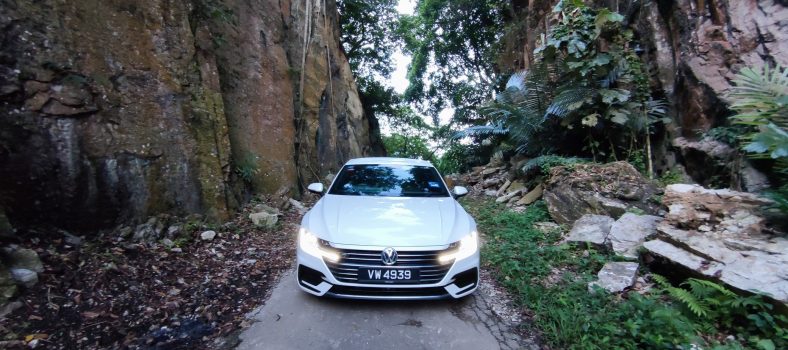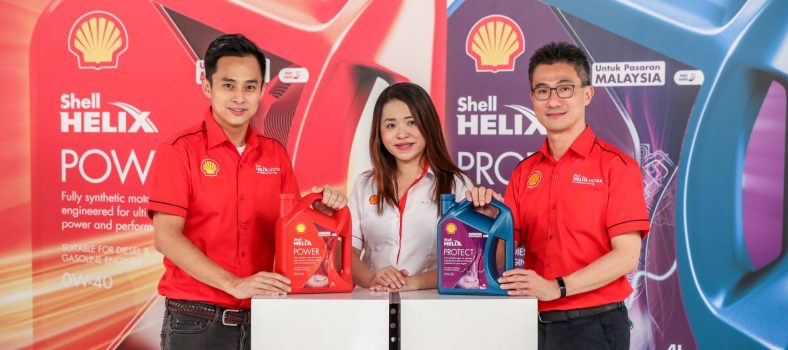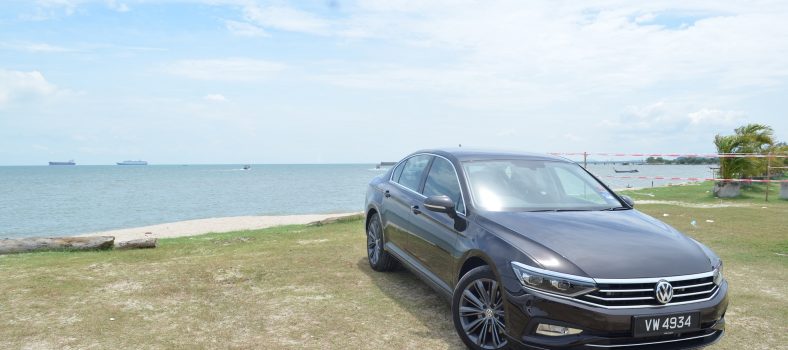If we define automotive modification as the act of changing some aspect of the vehicle’s characteristic until is not longer the same as when it first rolled out of the showroom, then the one ‘mod’ we can all agree we’d do almost immediately is adding vehicle tints. Let’s face it, in our hotter-hot-wet-wetter weather, there’s very little reason not to make our vehicle cabin comfier by enhancing whatever filter our stock windows provide, if any at all. More so when tints are so cheap nowadays with some throwing huge discounts and promising it can do just about everything expensive tints can do.
Infra red rejection? 99.99%
UV rejection? 99.99%
Total Solar Energy Rejected? 99.99%
Visible Light Transmittance (VLT)? Don’t worry la! JPJ can even see your underwear from outside. Sure comply. Guarantee or I ‘pow’ any saman you get.
Sounds familiar? Yep, we’ve all heard it all before – so much that it’s almost as tiring as going to a home expo and selecting a curtain supplier from the sea of curtain suppliers who all offer the-best-deal-you-can-buy. Or travel agent at a tour fair with almost identical packages. Or bridal galleries that show how artsy they can shoot your album when in some cases, they share the same freelance photographers & photo editors.
It gets tiring at times, choosing between them so most of the time we’d usually go with recommendations from friends (or online reviews) or just stick with established brands. It’s safer this way – but are they necessarily the best in the field? This is where I did my own research and found that the tinting business has evolved a bit since I bought my first car more than 12 years ago. I went shopping and asked people of the industry a few questions I’ve always had in my mind.

1%, 5%, 10% – How do we tell if advertisers are being truthful in their claims?
We can’t. There are meters in the market that measures different things when it comes to films such as those used by JPJ or Puspakom that checks for specific VLT numbers but ambient heat is something that’s a bit more tricky.
For instance; did you know that generically there are a couple of types of tints?
- Glue-coated dye – one of the most basic and common tint in the market. The glue is the material that’s responsible for blocking heat and like all glue, they don’t last. Cheap though.
- Dyed films are better than glue-coated types because the color is applied directly to the tint.
- Nano-ceramic films is what some branded tints offer where solar energy is absorbed on a nano scale. Much like ceramic brakes, they absorb and disperse heat rapidly. Some of these films have high contents of metal coated in them, which makes them Smart Tag unfriendly

Cheats of the trade
Due to the fact that there isn’t a standard in testing and verifying tint vendor claims, some unscrupulous shops may maximize profits by promising you high performance tint then swapping the tints for something else, usually lower spec-ed and price.
To avoid being detected (too soon), these individuals would swap only the side window tints which contributes less to heat rejection as opposed to the main front and (if applicable) rear windscreen.
So imagine this; you drive your new untinted car to an accessory shop, the sales person introduces various options and you decided on a relatively high grade model to provide better comfort to you and your family. Few hours later, your car is ready and you instantly feel it’s cooler inside the moment you leave the shop.

That first moment is the time when you instantly decide whether this tint is good – but you may be comparing it against the car few hours prior without tint. Even a low grade glue coated tint performs better than an untinted window so the initial impression may not be accurate.
After some time, the heat rejection properties fade but you won’t feel it that much because you’ve acclimatized to the condition.
These scams work our skin isn’t exactly the best instrument for measuring heat. Unless you have two similar type cars, done in two different shops using the same film brand and spec that you may have a possibility of identifying the problem. Even then it’s your word against their word.
The other common scam is some companies offering dirt-cheap tints that’s as-good-if-not-better-than branded tints. Then when the tints don’t perform and the customer returns to claim, you can’t find these people anymore. Typically these fly-by-night companies earn abnormally high profits per car they do by buying subpar tints and charging a profit, do a couple of hundred cars and close shop.
It is these people that do the industry no favors, much like how movie piracy put honest traders out of business.

Educate yourself
It is because of all these issues that we should do more research before paying for any tints.
As a general rule, brands that has performed well in the past would be a good start in our selection. Aside from our experience, we also depend on recommendations from friends and relatives as well as reviews from trusted sites.
I’ve owned a number of cars and I’ve never scrimp on car tints since I’ve always valued comfort highly. I’ve been using 3M and Llumar for the Golf and previously on the Skoda Octavia and generally they’ve performed well.
However, I wondered since the last time I used their products, has there been any new tint technology in the market and yes, there are two others that is now commercially viable;-
- Sputtering films is a multi-coated film with rare metal to effectively reflect heat with minimal absoption. Sputtering method makes use of a microscopic coating, thus ensuring excellent visibility and lower visual reflection to make mirror surfaces appear more luxurious.
- Multi-layer sputtering is arguably the top of the range where unlike heat absorbing and dispersing nano-ceramic, this film almost never re-absorbs heat. It deflects up to 90% of heat away from the car interior. The result – a much cooler and comfortable environment inside.
From the above, it would make sense for companies to develop sputtering technology, right?
Except the complexities involved makes it difficult to produce films that rejects heat effectively AND allowing crystal clear see-through clarity. It’s as fine as dish where temperature, methodology, ingredients, etc all play a role in the finished product.
Having used about 6 different brands of film from cheap to established brands, I’ve noticed there is a difference when the vehicle is parked in similar weather conditions. If the car moved, nano-ceramics would be doing a good job at dispersing heat. Had the vehicle remained static, we may be measuring a different temperature.

Among the sputtering films in the market, I decided on Agard. It’s not a new brand, having been around for the past 10 years and I’ve got friends who’ve used it before with no complaints. Last year they launched the Agard Precise range of tints which is claimed to cover a wider IR spectrum so that it’s more effective in heat rejection. Being a multi-layer sputtering film, its does what every branded film claims;-
- Improves air conditioner efficiency by blocking solar energy from outside
- Ensures balanced and comfortable indoor environment by lowering heat re-emission and absorption
- Reduces fading & discoloration of interiors and appliances by blocking infrared and UV rays
- Prevents shattering to minimize break-in or accident damage.
In terms of price, it’s higher than regular Agard range, closer to the branded films I’m used to but since this is a new technology film, one that’s sourced from South Korea has gotten me curious. If you don’t already know, I’ve been working in a Korean healthcare company dealing with advance x-ray imagery & prior to this, I’ve been a competitor to this brand. I’ve seen both sides of the spectrum (in terms of technology) & I can confidently tell you that the Koreans place a lot of emphasis in quality and being first to break new grounds.
Korean origin products, IMHO is no longer regarded as a drawback.
Result

Agard Precise has the following specifications:-
Infrared Rejected : 90%
Ultraviolet Rejected: 99.9%
Total Solar Energy Rejected: 60.3%
Visible Light Transmittance (VLT) is either 40% (for Precise 50) or 60% (for Precise 70)
The difference in VLT is to comply with JPJ regulations which is 70% for front windscreen, 50% for front side window, 30% for rear side window and rear windscreen.
With 30% VLT for rear, I could have opted to darken the back windows but choose not to so as to maintain a more homogeneous look.
The result was a shade that looked darker from my regular tints but clarity from within is great. It’s been 3 weeks since the tint was done and these are my options;-
- Heat rejected – by far the best compared to 3M and Llumar (not fair to compare with the Octavia which has a sloping rear windscreen that permits more heat but it’s fair to use the Golf as a benchmark). Considering that the Sorento has a much larger surface window, the heat rejection is, in my opinion superior to what I have in the VW.
- Smart Tag – no issues using it. The 3M Crystalline I had in the Octavia interferes with the Tag so the tint shop had to cut a small hole on the top part of my front windscreen to allow me to scan my RFID device. After doing this for 6 years in my Skoda, being able to scan without raising the Tag to a certain location is such a great convenience.

The only setback I face using Agard Precise is that it reduces the GPS signal on my phone. This is quite possibly a phone issue but it generally takes a few extra seconds for me to lock on. Also, if I were to mount it on a hands-free kit (as we’re supposed to do) and it’s directly below the front windscreen, no issue with the GPS. I just haven’t gotten around getting a new holder so it’s not a big issue.
All in all, I’m quite pleased with this and if I were to get another car (time to sell the Golf, perhaps?), I wouldn’t mind using this. In terms of heat rejection, I am very sure that it surpasses the other brands I’ve used.
There’s also another reason why I’d pick Agard; they’ve got an extensive network of certified installers that I can go back to if I have any issues. And if I have a dispute with the accessory shop that did my tint, I can always drive it back to Agard’s HQ in Puchong for them to check if the installation & film used is right. Any discrepancy they’ll assist to resolve.
Great tint with after sales support. What more do you want?




3 Comments
Since you own 1, when will you publish your review on it?
Pls share the cost to apply these Agard Precise?
why u not yet write on experince of kia service centre
we waiting